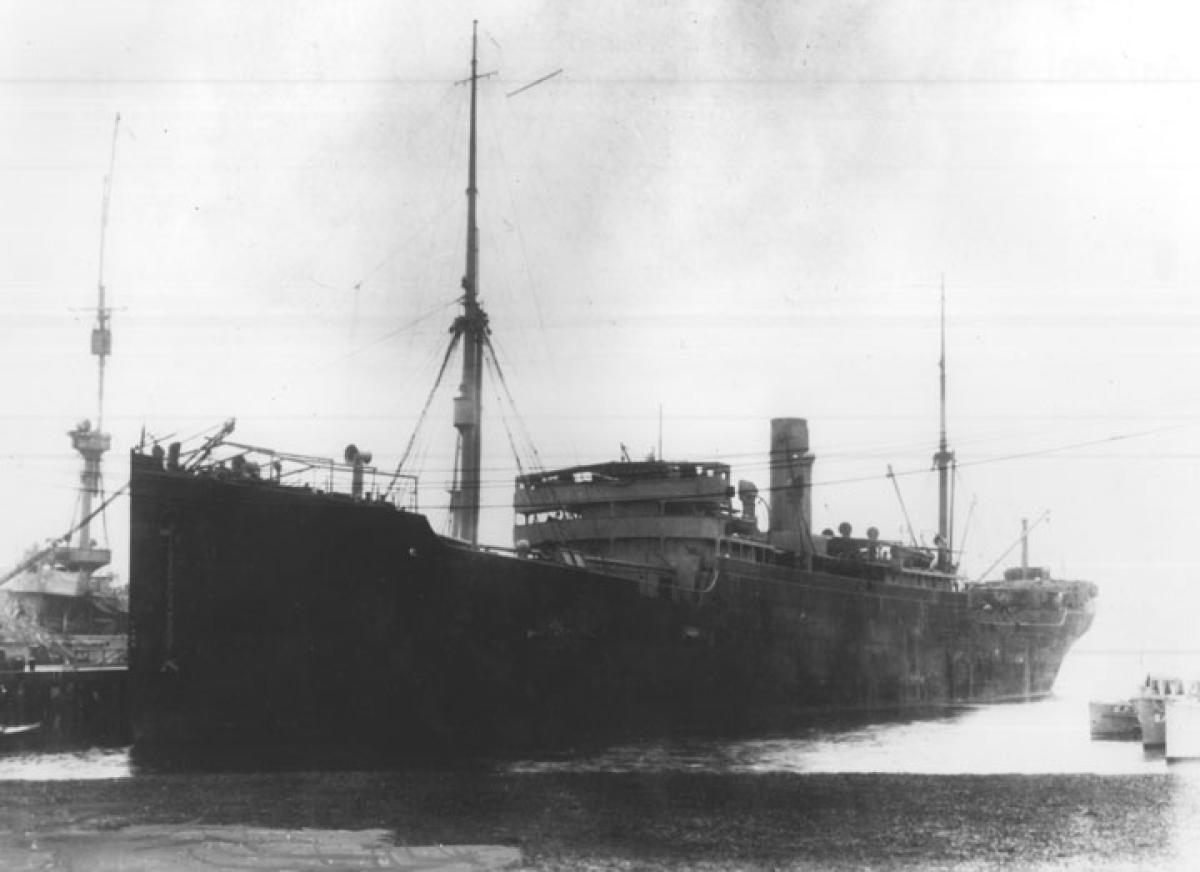James Jonas Madison had been a merchant mariner for most of his life, having first gone to sea in his mid-teens. Soon after the United States entered World War I, he joined the Naval Reserve, and by January 1918 he was commanding officer of the USS Ticonderoga as a lieutenant commander.
The Ticonderoga was the former German steamer Kamilla Rickmers, which had been interned in Manila in 1914 and was later seized by the U.S. government in 1917. She was a single-screw vessel with a top speed of 11 knots, a crew of 124, and two deck weapons—a 3-inch gun forward and a 6-inch gun aft.
Having made several Atlantic crossings without incident, the Ticonderoga departed New York on 22 September 1918 with a cargo of railroad ties and a special Army detachment of 116 soldiers. She was part of a convoy of 24 ships, escorted by the cruiser USS Galveston, but a week into the voyage, engineering problems caused her to drop back several miles from the protected cocoon of the convoy. Having accomplished the necessary repairs, the Ticonderoga was attempting to rejoin the convoy when a lookout spotted a German submarine close aboard on the port bow.
Captain Madison immediately tried to ram the U-boat but narrowly missed. The U-152 opened fire with both of her deck guns, destroying the American’s forward gun, knocking out her radio, temporarily disabling her rudder, killing several of the crew, and seriously wounding Madison. Unable to maneuver sufficiently to unmask her after battery, the Ticonderoga was a sitting duck. But instead of pressing the attack, the U-boat captain surprised the Americans by submerging. With the apparent reprieve, the Americans fought the fires caused by the German’s incendiary rounds and began making repairs.
But the German commander was merely using the safety of the depths to maneuver to a more advantageous position and soon surfaced, again pounding his adversary with 6-inch gunfire. Despite serious leg wounds, Madison continued to fight his ship with his one remaining gun. With flames consuming the mangled bridge, he dragged himself along the rail and, with the help of two crewmen, took up a position above the engine-room skylight where he could order tactical maneuvers and direct fire. But the American was clearly getting the worst of it, and eventually the Ticonderoga’s remaining gun was silenced. The U-boat then moved into position to fire a torpedo, her guns continuing to hammer the helpless American.
The torpedo slammed into the Ticonderoga just aft of her engine room, and she began to sink. Madison, still losing blood and in great pain, ordered abandon ship and ran up a white flag. The German continued to fire as survivors piled into the only lifeboat not damaged by the battle. After the Ticonderoga went down, the Germans fished two American officers out of the water and then departed with their POWs, leaving the remaining survivors adrift.
Four days later, a British freighter rescued the 22 Americans still alive. Of the 237 sailors and soldiers who had sailed from New York, 213 were lost. It was the greatest combat-related loss of life for the U.S. Navy in World War I.
Despite his grave injuries, Madison survived and was subsequently promoted to commander before retiring in August 1920. But he spent much of the remaining days of his life hospitalized, enduring several operations, including a leg amputation, before dying at the Brooklyn Naval Hospital in December 1922. For his “exceptionally heroic service” during the engagement with the U-152 James J. Madison was awarded the Medal of Honor, and in 1940, a destroyer bearing his name was commissioned, serving until 1969.



